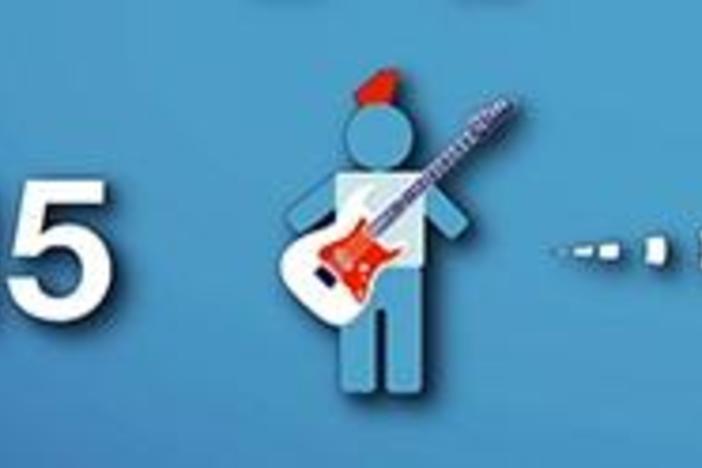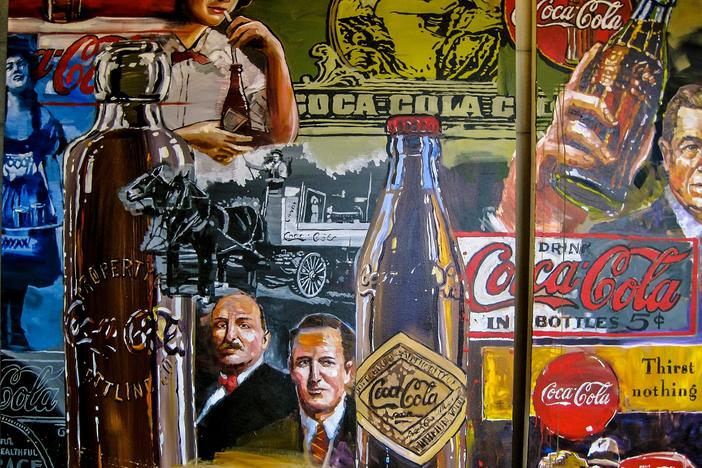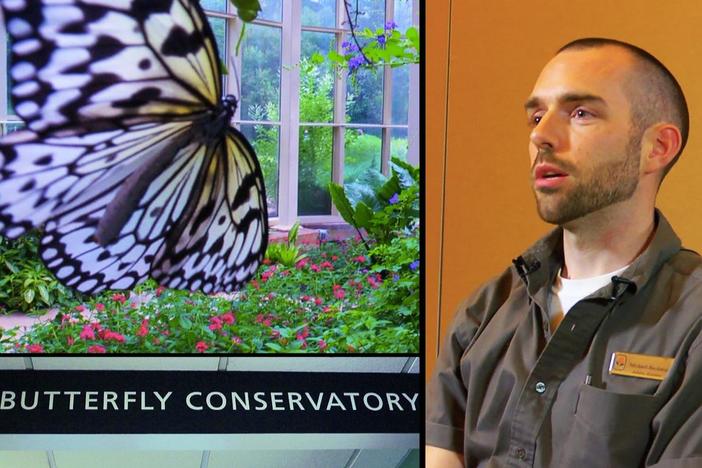Atlanta Motorsports Park
We visit the birthplace of NASCAR, along with a brand new country club for car lovers.
Atlanta Motorsports Park
We visit the birthplace of NASCAR, along with a brand new country club for car lovers. That’s right—instead of a golf course, they have a racetrack! In addition to looking back at the area's rich NASCAR history, Teachable Moments include an investigation of Newton's Second Law of Motion and an explanation of sound basics, including how sound waves dissipate over distance.
Science
Obtain, evaluate, and communicate information about how sound is produced and changed and how sound and/or light can be used to communicate.
Ask questions to identify and explain the uses of simple machines (lever, pulley, wedge, inclined plane, wheel and axle, and screw) and how forces are changed when simple machines are used to complete tasks.
Analyze and interpret data to identify patterns in the relationships between speed and distance, and velocity and acceleration.
Construct an explanation using Newton's Laws of Motion to describe the effects of balanced and unbalanced forces on the motion of an object.
Construct an argument from evidence to support the claim that the amount of force needed to accelerate an object is proportional to its mass (inertia).
Obtain, evaluate, and communicate information to support the claim that electromagnetic (light) waves behave differently than mechanical (sound) waves.
Plan and carry out investigations to identify the factors (e.g., distance between objects, magnetic force produced by an electromagnet with varying number of wire turns, varying number or size of dry cells, and varying size of iron core) that affect the strength of electric and magnetic forces.
Plan and carry out an investigation of one-dimensional motion to calculate average and instantaneous speed and velocity.
- Analyze one-dimensional problems involving changes of direction, using algebraic signs to represent vector direction.
- Apply one-dimensional kinematic equations to situations with no acceleration, and positive, or negative constant acceleration.
Construct an explanation based on evidence using Newton's Laws of how forces affect the acceleration of a body.
- Explain and predict the motion of a body in absence of a force and when forces are applied using Newton's 1st Law (principle of inertia).
- Calculate the acceleration for an object using Newton's 2nd Law, including situations where multiple forces act together.
- Identify the pair of equal and opposite forces between two interacting bodies and relate their magnitudes and directions using Newton's 3rd Law.
Construct an argument that analyzes the production and characteristics of sounds waves.
Construct explanations for energy transformations within a system.
Plan and carry out an investigation to analyze the motion of an object using mathematical and graphical models.
Construct an explanation based on experimental evidence to support the claims presented in Newton's three laws of motion.
Analyze and interpret data to explain how different media affect the speed of sound and light waves.
1. How does knowledge of Newton's 2nd Law of Motion help race car drivers?
2. How difficult do you think it is to balance the desire to build an economy around racing with Dawsonville's desire for noise reduction? Why?
3. How can a knowledge of sound dissipation help event planners and entertainment professionals?
CEO: (chief executive officer) the person who has the most authority in an organization or business
Isaac Newton: English mathematician, astronomer, and physicist who is widely recognised as one of the most influential scientists of all time and a key figure in the scientific revolution
Apex: the top or highest part of something
Accelerator: a device, typically a pedal, that controls the speed of a vehicle's engine
Throttle: a device controlling the flow of fuel or power to an engine
Sound Meter: a device used to measure acoustics (sound that travels through air), especially noise levels
Decibel: a unit for measuring the intensity of a sound
OSHA: (Occupational Safety and Health Administration) a government agency that assures safe and healthful working conditions
ANSI: American National Standards Institute is an organization that oversees the development of standards for products, services, processes, and systems
WHO: (World Health Organization) an agency of the United Nations that is concerned with international public health
EMT: (Emergency Medical Technician) a person who is trained to provide emergency medical services to patients who are being taken to a hospital
Paramedic: a healthcare professional, mostly in the pre-hospital and out-of-hospital environment, and working mainly as part of emergency medical services (EMS), such as on an ambulance
Green Technology: application of one or more of environmental science, chemistry, human monitoring and electronic devices to monitor, model and conserve the natural environment and resources, and to reduce the negative impacts of human involvement
Sustainable: able to be maintained or upheld at a certain rate or level
Sound Waves: a wave that is formed when a sound is made and that moves through the air and carries the sound to your ear
-
Special Thanks
Jeremy Porter, Becky Powell, Gary Freeland, David Headley, Carol McKenzie, Stephen Sheron, Sam Sheron, Kathy Patton, Justin Montoya, Georgia Racing Hall of Fame, Triple T Bed & Breakfast, City of Dawsonville








